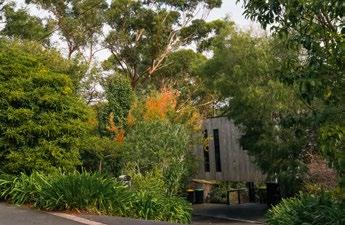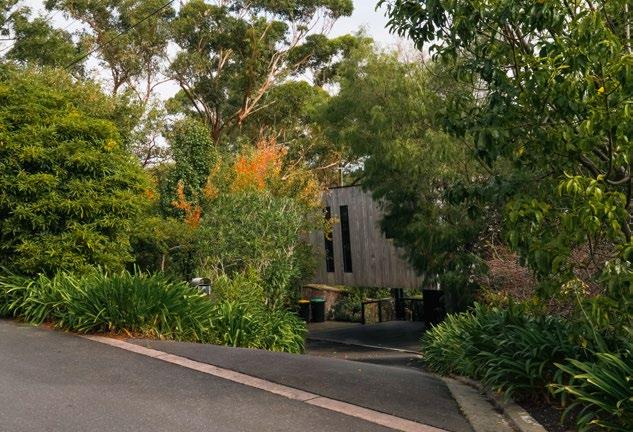The Frankston City Housing Strategy



Have your say between 17 July - 3 September 2023

We are shaping the future of housing in Frankston City
Our City is growing and over the next 15 years our population is expected to increase by 20,000 people. This means we will need up to 9,000 new homes.
The Frankston City Housing Strategy will guide the design, location and type of new housing across the City to meet our changing needs. The outcomes of the Frankston City Housing Strategy will be integrated into the Frankston Planning Scheme.


The planning scheme contains the rules and controls to guide land use and development across the City.
The Frankston City Housing Strategy will also contain other actions to drive Council initiatives, advocacy and collaboration on housing.
Our consultation is exploring:

1 2 3









Housing choice
New homes in the right places
Housing affordability
4 5
Well designed housing
Enhancing what makes our neighbourhood special
For more detail, visit Engage Frankston to view the Frankston City Housing Strategy Discussion Paper and other background information.
engage.frankston.vic.gov.au/housing-strategy

Our Frankston City
Frankston City boundary










Residential areas
Commercial areas

Public open space


Green wedge





Train station
Train line


Smart bus line
The Frankston City Housing Strategy will focus on land that is in residential zones. The Frankston Metropolitan Activity Centre will be a key location for future housing. This area is subject to separate planning investigations and will not be included in this Strategy.
Langwarrin Flora & Fauna Reserve Frankston Nature Conservation Reserve Ballam Park The Pines Flora & Fauna Reserve Baxter Park N E P E A N H I W Y CRANBOURNE-FRANKSTONRD NORTH RD ROBINSONS RD SKYE ROAD BALLARTO RD DANDENONG VALLEY HWY THOMPSONS RD MCCORMICKS RD LANGWARRIN SOUTH FRANKSTON SOUTH FRANKSTON LANGWARRIN FRANKSTON NORTH SEAFORD CARRUM DOWNS SKYE SANDHURST Frankston Metropolitan Activity Centre Karingal Major Activity Centre Frankston Beach Oliver Hills Beach Seaford Beach Seaford Wetlands Kananook Beach
Today,
Housing choice
1





Housing choice means having a range of housing types, sizes, and price points across the City. This can include apartments, townhouses, units, key worker housing and social and affordable housing, in addition to detached homes.
It is important to have diverse housing so that Frankston City is an equitable, sustainable and affordable place to live, for all.
Different types of housing we are planning for:
Detached houses
Single houses, typically 1 to 2 storeys in height.
Dual Occupancies


Two separate dwellings on one block. This can include granny flats.
Townhouses and Units
A mixture of dwellings provided on one block.
Apartments
Can comprise a variety of lower-scale or higherrise buildings.
What kinds of homes would you like to see in Frankston City?

Have your say at: engage.frankston.vic.gov.au/housing-strategy

most of our community live in single detached houses. We know that different people have different desires and needs for their home. These can vary across age, lifestage, cultural background, ability and income.
New homes in the right places


Cities are always changing. We don’t have many undeveloped areas across Frankston City. This means all our suburbs will need to accommodate some housing growth and provide more choice to residents.

New housing growth should be directed to areas that are close to public transport, jobs, retail, community facilities, open space and other services.
Growth should be discouraged in areas that have been identified as having considerable environmental constraints or character values
What the Housing Strategy will consider




The Frankston City Housing Strategy will outline the ‘how’ and ‘where’ future housing growth is to be delivered by designating areas for substantial, incremental or limited change. These areas will be identified based on a set of criteria:
• Substantial change areas – will support high levels of residential growth in areas close to services, employment and key public transport routes. A mix of apartments and unit developments would be encouraged in these areas.

• Incremental change areas – will support moderate levels of residential growth in areas near to services, employment or transport. A mix of unit developments, townhouses and single dwellings would be encouraged in these areas.
• Limited change areas – will support low levels of residential growth due to constraints relating to environmental values, hazards, heritage or neighbourhood character.
Would you support an increase in density if it results in improved public transport, shops and services in your area?
 THE FRANKSTON CITY HOUSING STRATEGY
THE FRANKSTON CITY HOUSING STRATEGY
We need to carefully plan the location of future housing growth and change to support the affordability, sustainability and character of our suburbs.
engage.frankston.vic.gov.au/housing-strategy 2
Have your say at:
Housing affordability

The term ‘housing affordability’ usually refers to the relationship between expenditure on housing (prices, mortgage payments or rents) and household incomes. Housing affordability may affect a wide range of people during their lives in different ways, and has become a widespread issue across Australia, particularly for low- and moderateincome households seeking to rent or buy housing.
We can support housing affordability by providing a range of well-designed different types of housing in accessible locations across the City.
The concept of housing affordability is different to the concept of ‘affordable housing’. The Victorian Government provides a definition of affordable housing as ‘Housing that is appropriate for the needs of a range of very low to moderate income households, and priced (whether mortgage repayments or rent) so these households are able to meet their other essential basic living costs’. Affordable housing can include many different types of homes, including subsidised market housing, assisted home ownership models to social housing (public and community housing).

What the Housing Strategy will consider




Responsibility for improving access to affordable housing rests with everyone – all levels of government, the property and development sector, the community housing sector and the broader community. There are a rage of different actions that Council can take to support affordable housing in Frankston City – from improving policy to advocacy.
What role do you think Council should play in helping to support more affordable housing in Frankston City?

Have your say at: engage.frankston.vic.gov.au/housing-strategy


3
Access to appropriate housing is a basic human right.
Affordable housing is housing that is appropriate for the housing needs of very low, low, and moderateincome households.
Well designed housing
There are a range of design considerations that Council can directly influence through the Frankston City Housing Strategy and Frankston Planning Scheme.

It is also important that future housing is designed to be environmentally efficient, responsive and resilient. Things like the building layout, materials, landscaping, amount of open space and number of car parks can influence the liveability of a home.

Good design reflects local neighbourhood character and provides housing choice. Council can guide design aspects like building height, appearance, private open space and
Have your say at: engage.frankston.vic.gov.au/housing-strategy






4
What does good housing design look like to you?
We want new housing to be designed to positively contribute to our neighbourhoods and support a good quality of life for the people who live there.
The Frankston City Housing Strategy
Enhancing what makes our neighbourhood special
Each neighbourhood in Frankston City has unique qualities and features which make it distinctive. Council has identified 10 neighbourhood character areas that apply to residential land across Frankston City.

As part of the Housing Strategy, Council will be preparing guidelines that will seek to reflect and enhance the look, feel and values of our City’s residential areas.
From our coastal areas to leafy suburbs and rural neighbourhoods, Frankston City has it all.
What characteristics do you value?



Some of the neighbourhood characteristics that are considered through the Neighbourhood Character Study includes:
Building heights

Setbacks
Street trees and public spaces
Colours and materials



Front fences
Landscape and garden space
What makes your neighbourhood special?
To see what neighbourhood character precinct your house is located within, view our map online by visiting:
engage.frankston.vic.gov.au/housing-strategy
5
Have your say
Your views are important in helping to shape future housing in Frankston City. There are many ways you can get involved and have your say.
Join us at an upcoming pop up
Come and say hello and share your feedback about housing in Frankston City at one of our community pop ups. Everyone is welcome! To find a pop up near you, scan the QR code below.

Complete a survey






We want to hear your views on housing and neighbourhood character in Frankston. Complete a short survey via the QR code. You can also pick up hard copy surveys at Frankston, Seaford, and Carrum Downs Libraries, as well as the Frankston Civic Centre.
Visit Engage Frankston
All project information, reports and materials are available via our online engagement platform

Engage Frankston: engage.frankston.vic.gov. au/housing-strategy
Engage Frankston!
Get in touch
If you have any questions about the project, you can contact the project team via email at info@frankston.vic.gov.au or via phone 1300 322 322

























































